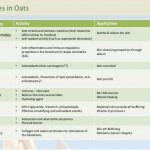Redox homeostasis
If balance is truth, homeostasis is its biological expression. Students learn the importance of homeostatic regulation in the first few lectures of any physiology course. Research scientists may spend their entire careers defining the mechanisms that underlie homeostasis. However, despite the ubiquity of this concept, our traditional roster of regulated variables (temperature, pH, osmotic pressure, and so on) is not immutable. It may need expanding. Redox homeostasis is a new kid on the block and appears to be a serious player.
Free radicals and their derivatives are continually generated by eukaryotic cells and are buffered by an array of endogenous antioxidants. These two processes represent the yin and yang of redox biology, the ongoing push and pull by which electron flux proceeds. This electromotive pas de deux determines redox status and appears to be closely regulated in a variety of cell types (2). Redox homeostasis remains a novel concept. It is all but invisible in most physiology textbooks. However, the balance between free radical production and antioxidant buffering, illustrated in Fig 1, is fundamental to our discipline as are moments of subtle “unbalance,” the transient shifts in redox state that regulate physiological processes. Examples include penile erection, muscle fatigue, immune competence, airway resistance, and blood pressure; at the cellular level, development, growth, metabolism, and adaptation are also modulated via redox mechanisms (2).
The link between cellular adaptation and redox homeostasis is elegantly illustrated by a report from Falk and associates (3) in this issue of the Journal of Applied Physiology. These investigators studied the diaphragmatic response to mechanical ventilation, an intervention that minimizes mechanical loading of the muscle. Respiratory and limb skeletal muscles adapt similarly to mechanical unloading; both types of muscle lose mass, aerobic capacity, and contractile function (1, 5). Interestingly, many of these adaptive responses can be linked to redox-sensitive signaling and gene expression (6).
To better define cellular mechanism, Falk and colleagues (3) tested the impact of unloading on redox homeostasis in muscle fibers. The investigators found that muscle fibers respond to unloading by increasing cytosolic oxidant activity. The rise in oxidant activity is accompanied by a drop in total antioxidant capacity. Tissue levels of several individual antioxidants showed similar decreases. Total glutathione was diminished in unloaded muscle as were two antioxidant enzymes, glutathione peroxidase and CuZn-superoxide dismutase. However, antioxidants did not undergo a simple across-the-board drop. Some antioxidant enzymes were unaffected by unloading (catalase, Mn-superoxide dismutase, thioredoxin reductase-1), whereas another increased markedly (heme oxygenase-1). mRNA data suggest that these changes were regulated at the transcriptional level, at least in part. Muscle fibers adjusted their antioxidant portfolio by selectively upregulating expression of some genes and not others.
One strength of the study by Falk et al. (3) is its integrative approach to this adaptive response. Changes in redox homeostasis were assessed at the functional level using global indexes of both oxidant activity and antioxidant capacity. This strategy enabled the investigators to define net changes in redox processes that have multiple inputs and outputs. The use of global assays was essential because the sources and sinks of muscle-derived oxidants are interdependent and are not fully defined. It is not possible to monitor each individually. Plus, any individual marker may not accurately represent overall changes. This is nicely illustrated by the divergent responses of individual antioxidants documented by Falk et al.
http://jap.physiology.org/content/101/4/1011






